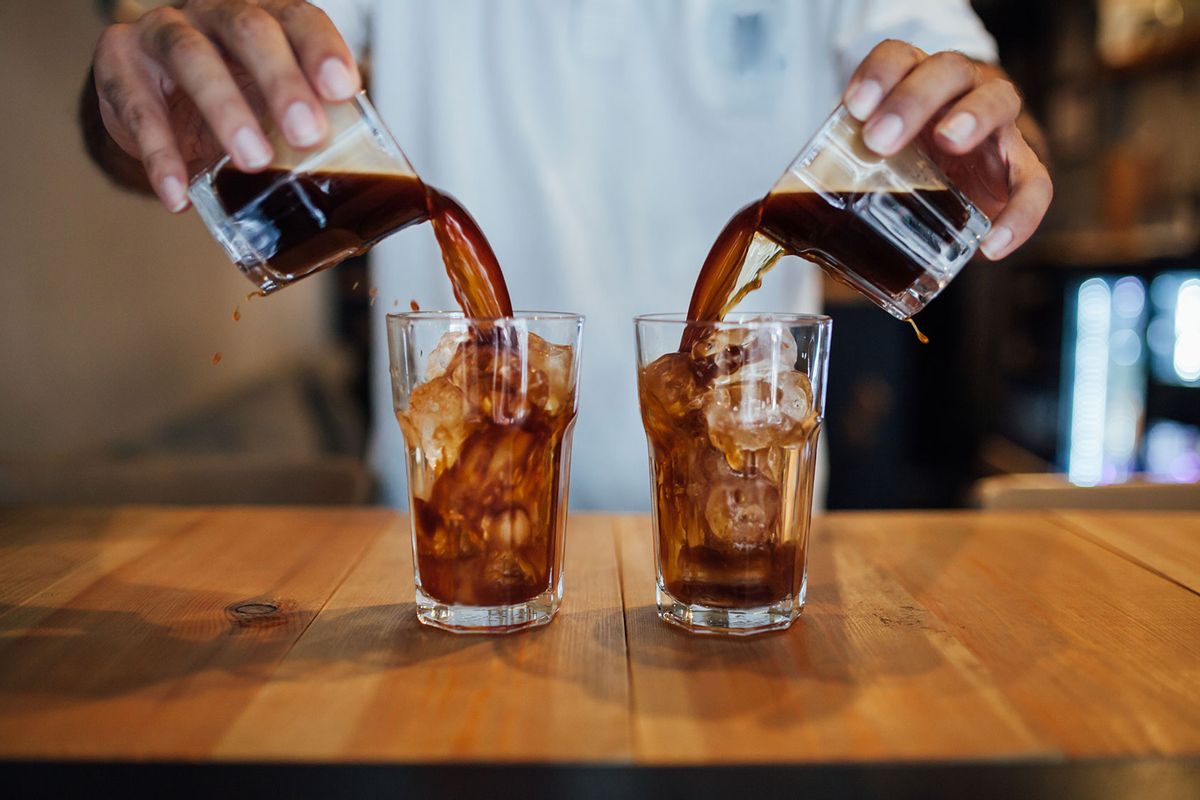Over the next four years, the canned cold brew coffee market is expected to grow by more than $400 million, reaching a total valuation of $1.37 billion. This shouldn’t come as a surprise. In 2021, cold drinks accounted for 75 percent of Starbucks’ total beverage sales—a result that led CEO Howard Schultz to describe the company’s global cold coffee opportunity as “simply enormous.” And yet, despite its substantial tailwind, the consensus among my friends, co-workers and online coffee communities (yes, these are separate groups), is that canned cold brew stinks.
When not canned, cold brew has a high approval rating among my coffee-drinking peers. As its name suggests, the beverage is brewed cold, a process that typically involves soaking coarsely ground coffee in water, steeping the mixture overnight and then finely straining it. When brewed cold, coffee extracts slower, meaning it takes longer for the beans’ flavorful compounds to dissolve into water. The process impacts coffee’s flavor and chemical makeup, ultimately producing a beverage many describe as “smoother” than traditional, hot-brewed coffee.
Although cold brew has been around since the 1600s (it originated in Japan), the beverage was not widely distributed in ready-to-drink packaging until recently. In fact, canned cold coffee of any kind didn’t exist until 1969, when Japan’s Ueshima Coffee Company launched its canned, milk coffee product. Per Coffee Intelligence, the first shelf-stable, ready-to-drink canned cold brew sold in the United States was made by High Brew—a company founded in 2013. And by 2014, coffee stalwarts Starbucks, Chameleon and La Colombe had conquered the market.
Producing ready-to-drink cold brew isn’t as simple as pouring the beverage into a can. Although roasted coffee beans and tap water are often sterile on their own, when combined, they create a low-acid environment that offers potential contaminants—like botulism and listeria—a chance to grow. For this reason, the FDA requires all canned, shelf-stable cold brews to be pasteurized.
According to Dr. Bruno Xavier, a microbiologist and associate director of Cornell’s Food Venture Center, the pasteurization process impacts cold brew’s ultimate flavor. “It has to be thermally processed to become commercially sterile,” he says. There are two ways to thermally process coffee: ultra high temperature (UHT) and retort. Per Dr. Xavier, during UHT, canned cold brew is heated to 270 degrees Fahrenheit for less than ten seconds. Retort is slower and cooler, heating the can to only 250 degrees Fahrenheit for seven minutes. “UHT has less impact on flavor,” he continued, citing processing time as the driving factor in flavor impact.
When describing canned cold brew’s altered flavor, consumers have complained that the beverage tastes “off” or “weird.” They’ve also claimed it smells off, as evidenced by studies investigating how manufacturers could mitigate canned cold brew’s “retort smell.”
Non-pasteurized, ready-to-drink cold brew can exist. However, for the beverage to bypass pasteurization, it must be refrigerated throughout its entire lifecycle, including transportation and storage. Unfortunately, the increased costs of cold shipping and storage combined with reduced shelf life, make pasteurization the most economical choice for most cold brew manufacturers.
As the beverage’s growing market suggests, not everyone dislikes canned cold brew. For many, it’s surely a matter of utility, as cold brew—canned or not—has more caffeine than regular coffee. Also, it’s dependable and accessible: You can find the leading cold brew brands at most gas stations, grocery stores and delis around the country. And some people—including my colleagues—actually enjoy its flavor. We recently conducted a blind cold brew taste test and asked participants to pick their favorite of two options: One that we made from scratch in the office and a canned option we bought at the grocery store. The taste test resulted in a tie.
Canned cold brew may not be doomed forever. According to Dr. Xavier, Velcorin—a chemical compound commonly used to pasteurize juice—could potentially enable the drink to be pasteurized without compromising flavor. “It’s very toxic, but it evaporates within a few seconds and the time is sufficient to pasteurize the product,” he said. While there’s no readily available canned cold brew using Velcorin, based on the beverage’s ballooning market, I wouldn’t be surprised if somebody made one soon.


Shares